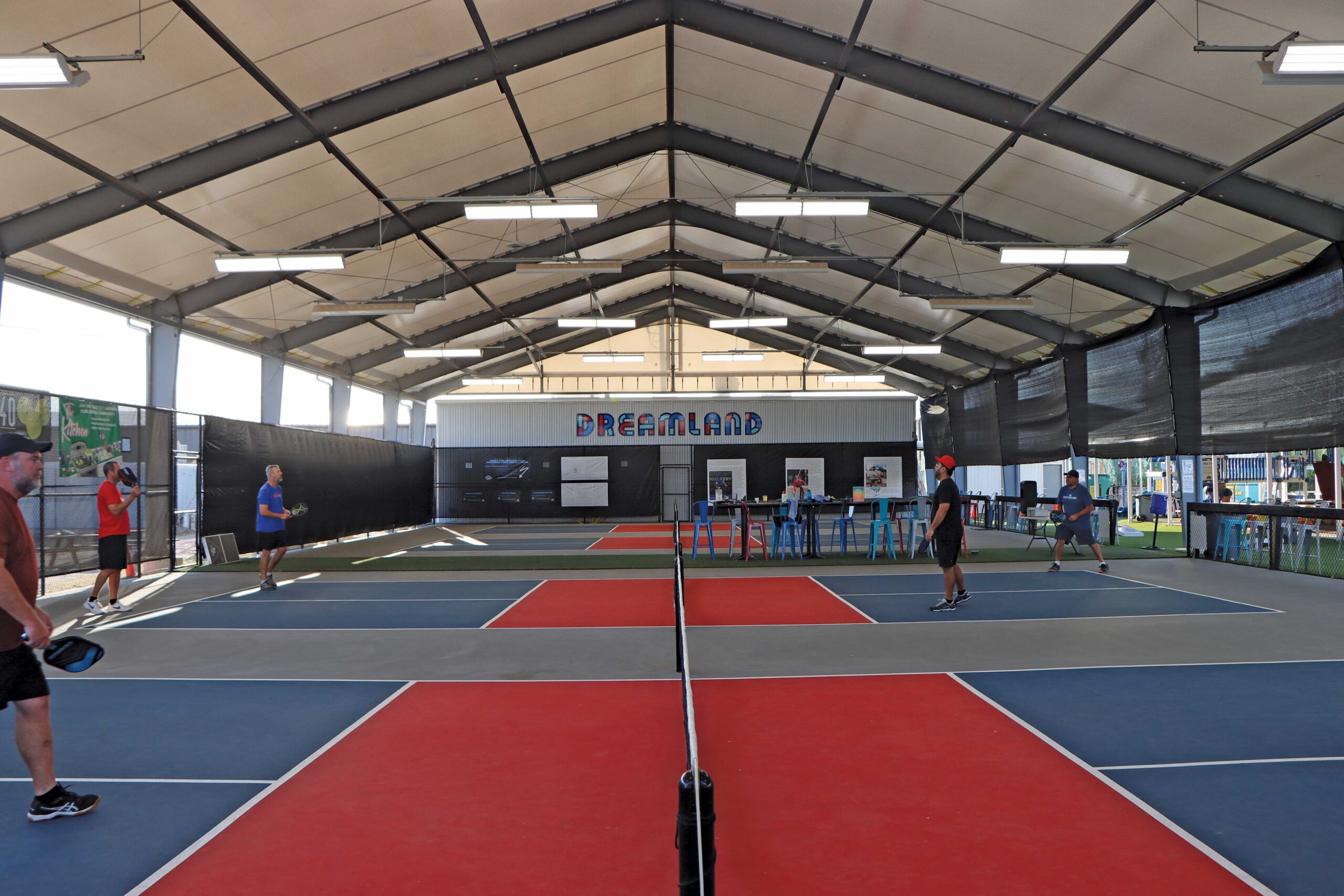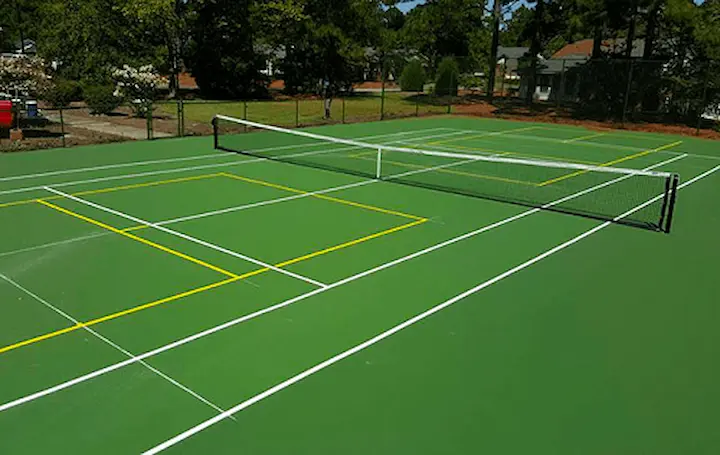Comprehensive Guide to Pickleball Courts Design & Construction in Illinois and Midwest
Comprehensive Guide to Pickleball Courts Design & Construction in Illinois and Midwest
Blog Article
Trick Consider the Construction of Pickleball Courts: From Website Selection to Last Surfaces
The building and construction of pickleball courts incorporates a range of essential elements, beginning with the selection of a proper website that balances ease of access with ecological considerations. Necessary elements such as court measurements, surface materials, and water drainage systems dramatically influence not only the top quality of play but also the durability of the center.
Site Selection Requirements
When starting the construction of pickleball courts, it is important to toenail down the site choice criteria that will certainly make certain optimal playability and access. The location must be conveniently reachable for players, preferably positioned near residential locations or community centers, to urge participation.
In addition, the terrain should be level and secure, as unequal ground can lead to safety and security dangers and impact gameplay. Appropriate drainage is also vital; selecting a site with good water drainage will certainly aid preserve court conditions during unfavorable climate.
Another crucial consideration is the accessibility of energies. Access to electrical power and water is needed for illumination and upkeep objectives. Furthermore, closeness to parking facilities is necessary, promoting easy access for players and viewers alike.
Ecological factors can not be neglected; natural shade from trees can boost gamer comfort, while exposure to prevailing winds might interrupt play. Finally, zoning laws and neighborhood assistance ought to be considered to ensure that the job straightens with local guidelines and receives the backing it needs for effective application. By carefully assessing these standards, stakeholders can develop an inviting and useful setting for pickleball lovers.
Court Capacities and Design
To make sure ideal gameplay and adherence to policies, the measurements and design of pickleball courts should be meticulously defined. A standard pickleball court measures 20 feet in size and 44 feet in length for both songs and doubles play.
The net height is evaluated 36 inches at the sidelines and 34 inches at the center, producing a minor dip that affects ball trajectory. Court markings are similarly important; lines ought to be 2 inches wide and unique in color to make sure visibility.
Additionally, a barrier zone surrounding the court is advisable, normally prolonging 5 to 10 feet beyond the sidelines and baselines to suit gamers' movements and boost security. Correct design and measurements not just make sure conformity with official policies yet additionally enhance the overall having fun experience, fitting both recreational and affordable play. Careful preparation in these areas is critical to the effective construction of pickleball courts.
Surface Material Options
Picking the ideal surface area material for pickleball courts is essential for guaranteeing ideal gamer performance and safety and security. The option of surface area can considerably influence gameplay, consisting of sphere bounce, grip, and gamer convenience.
There are a number of options offered, each with its unique attributes. Asphalt is a prominent option because of its longevity and low maintenance requirements. It Get the facts supplies a strong having fun surface that can stand up to numerous weather condition problems but may require periodic resurfacing.
Concrete is an additional widely utilized material, supplying excellent longevity and a smooth surface. It enables regular sphere bounce but can be difficult on gamers' joints, making it much less desirable for long-term play without correct cushioning.
For those seeking boosted comfort and shock absorption, cushioned acrylic surface areas present a feasible alternative. These surfaces combine a base layer with an acrylic overcoat, offering improved traction and a softer feel, which is helpful for decreasing the danger of injuries.
Lastly, artificial grass is acquiring traction, particularly for multi-purpose centers. Its convenience and reduced upkeep needs make it an appealing option, though it might not supply the very same round response as conventional hard courts. Cautious factor to see consider of these choices will certainly make certain an optimum playing setting.
Drainage and Illumination Factors To Consider
Proper drain and effective illumination are important elements in the building and construction of pickleball courts, considerably affecting both playability and security. Ample drainage systems stop water build-up, which can bring about unsafe surface areas and damage to the court framework. A well-designed water drainage strategy integrates sloped surface areas and ideal products to promote water move away from the playing area - Illinois and midwest. This not just preserves the honesty of the court yet also minimizes downtime due to inadequate climate condition.
Illumination is just as crucial, particularly for courts planned for evening use. Proper illumination improves visibility, making sure that players can see the round clearly and reducing the address danger of crashes. The positioning of lighting components should be tactically intended to get rid of darkness and supply even distribution of light across the court. LED lights are advised for their power performance and longevity, providing intense lighting while decreasing functional expenses.

Final Coatings and Maintenance
After dealing with drain and lights factors to consider, focus transforms to the final coatings and recurring upkeep of pickleball courts. Typical options include acrylic coatings and specialized sports surfaces that give optimal traction and padding.

Seasonal upkeep could consist of resurfacing every couple of years, depending on usage and ecological elements. Correctly keeping nets, court lines, and bordering locations is just as vital to provide a risk-free and satisfying having fun experience. By buying top quality finishes and adhering to a structured upkeep routine, center owners can guarantee their pickleball courts remain in outstanding problem for years ahead.
Final Thought
In conclusion, the effective construction of pickleball courts pivots on precise attention to several key factors. High quality surfaces and a robust maintenance schedule are essential for preserving the court's condition, improving the total experience for gamers and spectators alike.
Report this page